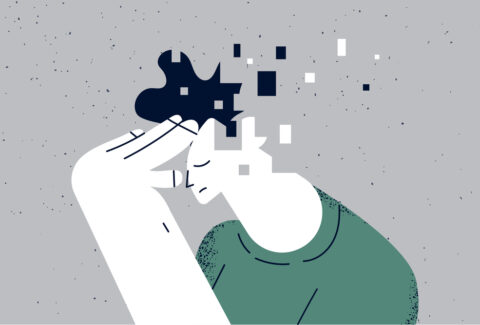The Power of Emotional Vocabulary: How Emotional Granularity Shapes Mental Health and Self-Regulation

The Power of Emotional Vocabulary: How Emotional Granularity Shapes Mental Health and Self-Regulation
Abstract
Emotional granularity—the ability to identify and differentiate among a wide range of emotional states—is a vital skill for psychological health. According to the Theory of Constructed Emotion (TCE), the brain uses learned emotion concepts to categorize internal sensations and guide behavior. This article explores how emotional vocabulary development enhances granularity, improves emotional regulation, and reduces the risk of psychopathology. We examine empirical studies linking emotional granularity to reduced depression, anxiety, and aggression, and analyze clinical and educational strategies for cultivating this skill across the lifespan.
Keywords
Emotional Granularity, Emotional Vocabulary, Constructed Emotion, Emotion Concepts, Emotion Regulation, Mental Health, Language and Emotion, Affective Science
Introduction
Why are some people better at navigating their emotions than others? One answer lies in the concept of emotional granularity—the ability to make fine-grained distinctions between emotional experiences. Someone high in emotional granularity can tell the difference between feeling “frustrated,” “disappointed,” “agitated,” and “disrespected,” while someone low in granularity may describe all these experiences simply as “angry.”
In the context of the Theory of Constructed Emotion (TCE), emotional granularity depends on the brain’s ability to construct emotion concepts using prior experience, contextual interpretation, and most importantly, language (Barrett, 2017). This article outlines the evidence that emotional vocabulary is not merely descriptive but constitutive of emotion—and that teaching people to develop richer emotional language can improve mental health outcomes, resilience, and behavioral control.
Theoretical Framework
Language and the Construction of Emotion
According to TCE, the brain constructs emotions by making sense of internal sensations (interoception) and external context using emotion concepts, which are learned through culture and language (Barrett, 2006; Lindquist & Gendron, 2013). Language is not just a tool to label emotion; it helps to form the emotional experience by shaping how the brain organizes and interprets affective input (Lindquist et al., 2015).
Emotional Granularity Defined
Emotional granularity refers to the specificity with which an individual can identify, distinguish, and describe their emotional states (Barrett et al., 2001). High granularity is associated with nuanced emotional awareness, while low granularity is linked to global, undifferentiated feelings.
Application / Analysis
Impact on Emotion Regulation
Individuals with high emotional granularity use more adaptive regulation strategies such as reappraisal and problem-solving, rather than suppression or avoidance (Barrett et al., 2001; Kalokerinos et al., 2019). They are better able to tailor their responses to situations, improving resilience and interpersonal functioning.
Mental Health Correlates
- Depression and Anxiety: Low granularity is associated with higher risk for mood and anxiety disorders (Demiralp et al., 2012).
- Aggression and Impulsivity: Adolescents with low emotional vocabulary are more prone to externalizing behaviors (Vine et al., 2020).
- Substance Use: Poor emotion differentiation predicts higher likelihood of using substances to manage mood (Kashdan et al., 2015).
Educational and Developmental Strategies
- Children: Emotional vocabulary training improves self-regulation and academic outcomes (Denham et al., 2012).
- Adolescents: Programs that enhance emotional labeling reduce bullying and behavioral issues (Brackett et al., 2012).
- Adults: Journaling, therapy, and mindfulness-based practices can increase awareness of emotional states and improve granularity over time (Feldman et al., 2017).
Implications
Clinical Practice
Therapists can help clients develop emotional vocabulary through:
- Use of emotion wheels and naming exercises
- Encouraging journaling of daily emotional states with specificity
- Psychoeducation on differentiating similar emotions (e.g., guilt vs. shame)
Granularity may serve as both a diagnostic indicator and a therapeutic target, particularly in treatment of trauma, personality disorders, and emotion dysregulation.
Policy and Systems Change
Social-emotional learning (SEL) programs should emphasize emotional vocabulary as a core competency. Curricula that prioritize emotional labeling and reflection can reduce disciplinary issues and improve mental health at scale (Brackett et al., 2012).
Equity and Culture
Emotion words differ across languages and cultures. Encouraging multilingual and multicultural emotion education ensures emotional intelligence is not defined solely by Western emotional concepts (Wierzbicka, 1999).
Conclusion
Emotional vocabulary is more than communication, rather, it is also construction. The more precisely we can label our feelings, the more effectively we can regulate, reflect, and respond. Emotional granularity is a skill that can be cultivated through education, therapy, and daily practice. By teaching and modeling rich emotional language, we empower individuals to live with greater clarity, control, and connection.
References
- Barrett, L. F. (2006). Are emotions natural kinds? Perspectives on Psychological Science, 1(1), 28–58. https://doi.org/10.1111/j.1745-6916.2006.00003.x
- Barrett, L. F. (2017). How emotions are made: The secret life of the brain. Houghton Mifflin Harcourt.
- Barrett, L. F., Gross, J., Christensen, T. C., & Benvenuto, M. (2001). Knowing what you’re feeling and knowing what to do about it: Mapping the relation between emotion differentiation and emotion regulation. Cognition and Emotion, 15(6), 713–724. https://doi.org/10.1080/02699930143000239
- Brackett, M. A., Rivers, S. E., Reyes, M. R., & Salovey, P. (2012). Enhancing academic performance and social and emotional competence with the RULER feeling words curriculum. Learning and Individual Differences, 22(2), 218–224. https://doi.org/10.1016/j.lindif.2010.10.002
- Demiralp, E., Thompson, R. J., Mata, J., et al. (2012). Feeling blue or turquoise? Emotional differentiation in major depressive disorder. Psychological Science, 23(11), 1410–1416. https://doi.org/10.1177/0956797612444903
- Denham, S. A., Bassett, H. H., & Zinsser, K. M. (2012). Early childhood teachers as socializers of young children’s emotional competence. Early Childhood Education Journal, 40, 137–143. https://doi.org/10.1007/s10643-012-0504-2
- Feldman, G. C., Hayes, A. M., Kumar, S. M., et al. (2017). Mindfulness and emotion regulation: The development and initial validation of the Cognitive and Affective Mindfulness Scale–Revised. Journal of Psychopathology and Behavioral Assessment, 29(3), 177–190. https://doi.org/10.1007/s10862-006-9035-8
- Kalokerinos, E. K., Erbas, Y., Ceulemans, E., & Kuppens, P. (2019). Differentiate to regulate: Low negative emotion differentiation is associated with ineffective use but not selection of emotion regulation strategies. Social Psychological and Personality Science, 10(6), 712–721. https://doi.org/10.1177/1948550618780728
- Kashdan, T. B., Barrett, L. F., & McKnight, P. E. (2015). Unpacking emotion differentiation: Transforming unpleasant experience by perceiving distinctions in negativity. Current Directions in Psychological Science, 24(1), 10–16. https://doi.org/10.1177/0963721414550708
- Lindquist, K. A., & Gendron, M. (2013). What’s in a word? Language constructs emotion perception. Emotion Review, 5(1), 66–71. https://doi.org/10.1177/1754073912451351
- Lindquist, K. A., Satpute, A. B., & Gendron, M. (2015). Does language matter for emotion? Current evidence and new directions. Emotion Review, 7(2), 130–134. https://doi.org/10.1177/1754073914553006
- Vine, V., Aldao, A., & Nolen-Hoeksema, S. (2020). Emotion regulation as a transdiagnostic process. In M. N. Potenza & R. C. Krueger (Eds.), The Oxford Handbook of Emotion Dysregulation (pp. 64–84). Oxford University Press.
- Wierzbicka, A. (1999). Emotions across languages and cultures: Diversity and universals. Cambridge University Press.
Download the scholarly version of this article by clicking HERE






